Amazon Cacao Farmers: Preventing Deforestation in Ecuador

Chuya Yaku is a Kichwa community in Ecuador located in the heart of the Amazon. Their cacao growing efforts are preventing deforestation in the rainforest.
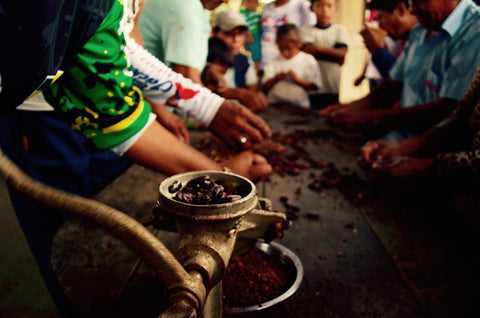
In Kichwa, Chuya Yaku means clear water. Kichwa is the indigenous language spoken by just over 180 people that live in the community and is a common dialect of the region.
Until 2012 Chuya Yaku was inaccessible by road, the elders of the community report that it would take them over a week to reach Puyo, and two days to the nearest town. Once oil industries found out that there was valuable oil in the region, they built a road with the intention of extracting resources. Excessive logging is a secondary effect of the road being built. In the last three years lumber and oil industries and even the local municipality have put money into road and bridge development for continued extraction of resources and extending roads farther into the rainforest.

Even though resources are being exploited and creating a negative impact on surrounding communities, the majority of Kichwa people still would choose to have road access rather than being secluded in the jungle. On our way down to Chuya Yuku we saw at least ten illegal logging access points, half a dozen trucks carrying oil and brand new Volkswagon bus full of workers to aid in the extraction of oil.
Having an open dialogue about the communities’ experiences and hardships with cacao production was invaluable. They told me stories of how they continually get taken advantage of by greedy intermediaries, sometimes only getting 30 cents per pound of cacao. The intermediaries are buying cacao to sell to Nestle or other large chocolate corporations and are only concerned with the bottom line. The farmers also face diseases that infect their cacao pods, diseases like Monilia, that infect and rot the cacao pod.
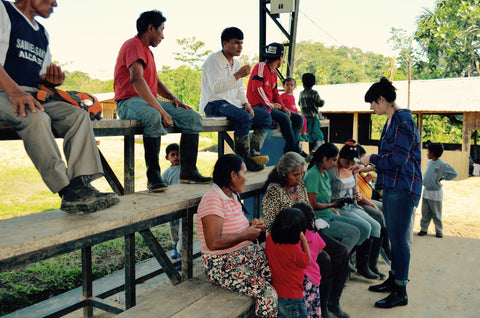
They have stories of government funded agencies coming in and giving them a high yield cacao, called CCN-51, which is less susceptible to diseases but lacks any flavor. Many farmers have left the more flavorful and native varietals to rot on the trees favoring the higher yielding varietals.
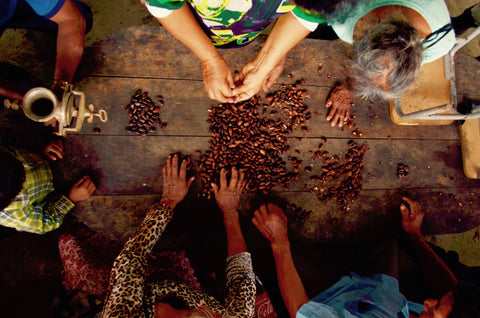
It is clear that in order to prevent deforestation, contamination of the environment and the livelihood of its people, there needs to be opportunities for the Kichwa people to have a sustainable income as they become more and more exposed to a globalized world. When it comes to combating multinational oil and timber industries, they can use all the support and expertise they can get, as long as their best interests are being met.
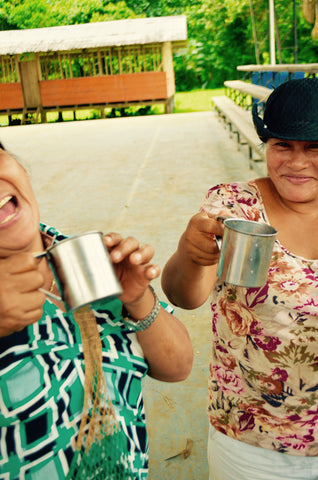
Chuya Yaku has dedicated a large portion of their territory to preserving their natural resources, many thanks to the Arajuno Road Project who worked with the Chuya Yaku on a community zoning and mapping project. If they can successfully make a living selling cacao instead of hardwood they can show other neighboring communities that there are better long-term solutions for their community than the complete destruction of the environment they live in.
The cultivation of cacao offers a symbiotic solution with the rainforest and its people. It has the potential to bring a more holistic level of prosperity to the community and region without destroying their complex ecosystem.
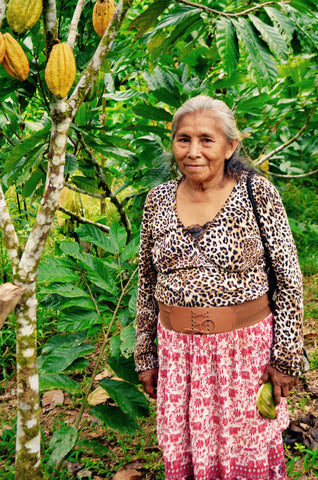
It is easy for me to be offer up my opinions on preserving the rainforest and present my solutions coming from a nation that is developed, otherwise known as the Minority World. People in developing nations or the Majority World are still fighting for basic needs and often do whatever they can do to feed their families, the need direct incentives that help them feed their families in the short term. Offering long term solutions like the cultivation of cacao requires a lot of continued support and farmers already feel burned from past experiences working with companies from the Minority World.
When I first spoke with the farmers they wanted to know who was going to buy their cacao at a fair price if they spent the time to nurture their heirloom varietals, they wanted to know what could be done to build a fermentation center and drying center for the post harvest processing of cacao, what kind of materials they needed and how were they going to afford it. They wanted to know how to prevent their cacao from diseases. They wanted to know how many kilos of cacao they needed to produce to be able to have control of the price of their cacao. They wanted to trust that caring for their plants was worth it in order to support their families.

Even though I did not have all of the answers for them my goal was to show them all the possibilities they had with the production of cacao. Empower them with the knowledge that they could have control of their own production and post harvest production of cacao and therefore have more control over price they charge for their cacao. I wanted them to know that there are more and more bean to bar chocolate makers in the Minority World that cared about the farmers. indi chocolate and other bean to bar makers want a fair and just price for cacao that was properly cared for, to pay farmers direct. We care about the success and well being of the farmer.
Offering technical support, making connections and opening the door to possibilities is what I offered during my time spent with the community. The term direct trade was definitely a newer concept that took some time to explain, but was important for me to relay.
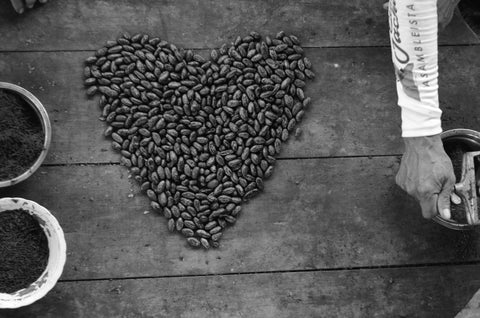
Throughout the class we tried various chocolate, made by bean to bar chocolate makers from the United States. They tasted multiple bars all using Ecuadorian cacao, including indi chocolate. None of them had ever tried chocolate made from Cacao Nacional beans.
Some cultures in what was once Mesoamerica have a special history with cacao, but in these jungle communities cacao is a fruit, like papaya or mango. The Kichwa do not have a history of making cacao into chocolate, so when they heard that I was going to teach them how to make chocolate they were very excited.

The first day we brought gas into the community and got the generator working to run the Chocolate Refiner and we made chocolate together. Everyone stuck their heads in to see the stone wheels grinding the cacao. When the chocolate was smooth enough, we filled a giant cauldron with milk, sugar and chocolate. Everyone sipped happily as we filled and refilled each other’s cup.

After traveling to many different countries, one thing that always remains true, communities that have very little often give the most. Not only were we fed special Miato, fish and yucca cooked in banana leaves over the fire, we were treated graciously and honored as guests. As I sat talking to one woman, a little girl started playing with my hair and a woman pressed to my lips a bowl full of chicha, yucca that is fermented and served by the community elders.
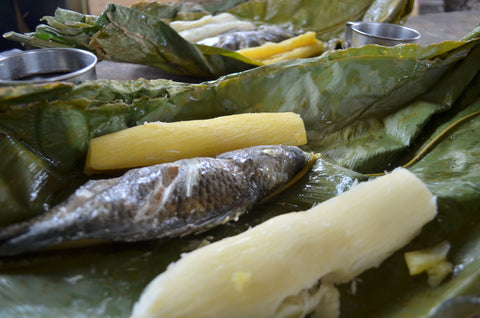
We visited some of their chakras, bio-diverse family farms, to see the conditions of the plants, it is true that many of the plants had been diseased with Monilia. For the last three months they had been getting help from a cacao technician, learning more about how to care for their plants. They had been heavily focused on pruning and improving the quality of the soil around the trees. They are highly motivated to learn more and to improve the quality of production.

Over the fire we roasted two batches of cacao that they had grown, fermented and dried. One was CCN-51 and the other Cacao Nacional. As the beans cracked from the heat, we began to smell the familiar chocolate aroma. Around a table we winnowed the bean, removing the husk from the bean. Everyone took turns using the hand grinder to grind the cacao beans into a powdery paste.
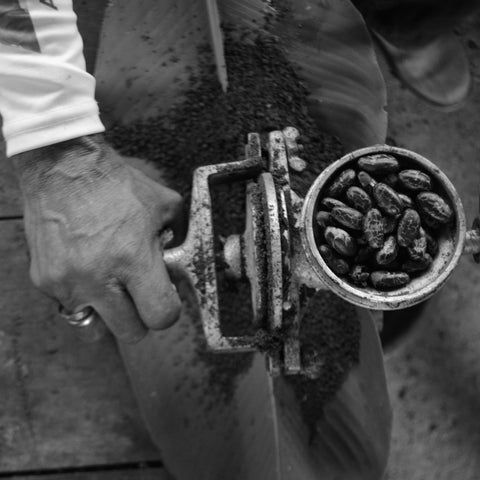
At some point during the workshop the energy shifted and I was no longer a necessary facilitator. I stood back and took photos of the community making their very first batch of chocolate. I over heard them talking about what they could add to the chocolate and who they could sell the chocolate to.
I made sure they separated the CCN-51 from the Cacao Nacional and without being prompted they tried the two side by side and proudly announced that the Cacao Nacional did not taste bitter at all and no sugar was needed. It was a magical moment, I could feel their eyes light up, the fire burning inside of them and it was infectious.
There are many factors that make cacao production harder than harvesting hardwoods, but in the long run rainforest communities as well as the rest of the world will benefit from the sustainable production of cacao. It is up to us, people from the Minority World, to prove that the efforts cacao farmers make to care for their heirloom cacao is worth it. Understanding that the cost of chocolate that is supporting cacao farmers has a higher cost than chocolate produced with unknown origins. In the case of Chuya Yaku buying cacao from this community would aid in preventing extraction of oil, deforestation and further contamination by extraction of non sustainable commodity goods.
The average production of cacao does not support the community where it originates from. Choosing companies that work directly with farmers positively impacts the farmers themselves. The reverse is also true, when you choose to buy from companies that make no efforts to support farmers you are directly impacting these communities in a negative way. By no means is it fair to assume that everyone from the Minority World can afford to consume chocolate that reflect direct trade pricing, but the hope is that everyone understands that chocolate is truly a treat, that should be nurtured and cared for throughout the whole process and should be appreciated and respected for the work that goes into growing and making it.

A chocolate making workshop in Chuya Yaku is just the start, if they want to build a fermentation center, make cacao based products and have chocolate ecotourism, they will need continued guidance and support so they can really compete with multinational efforts working to keep the price of cacao down.
Article Written by Rebecca Roebber, Marketing Director for indi chocolate




